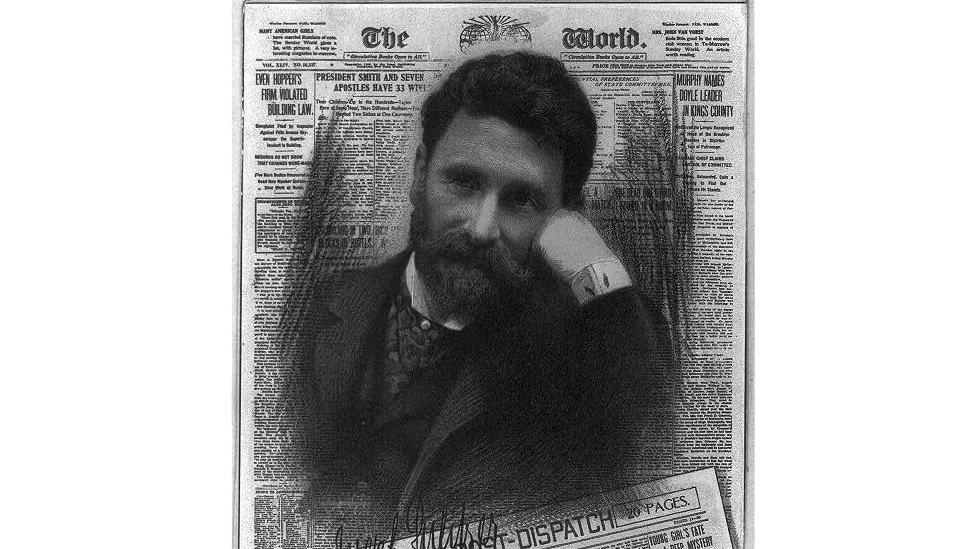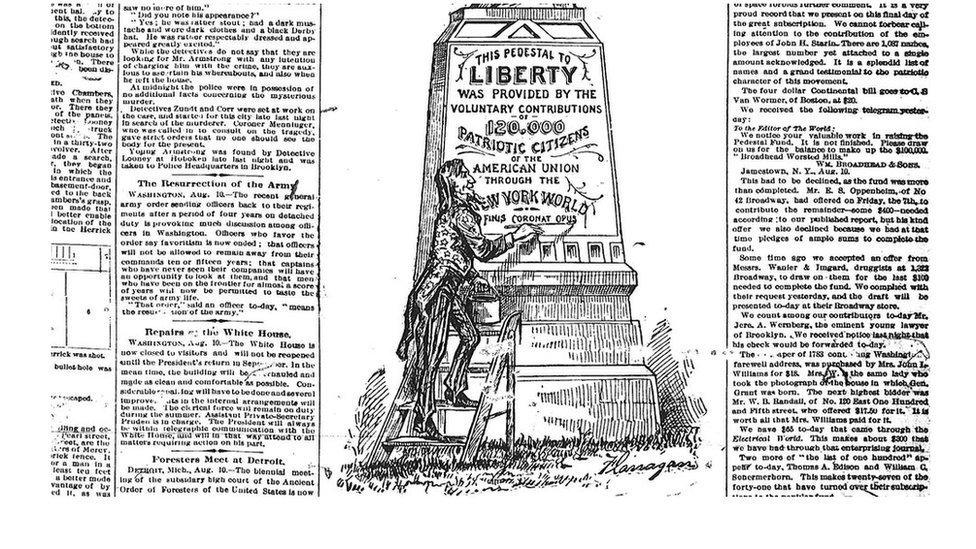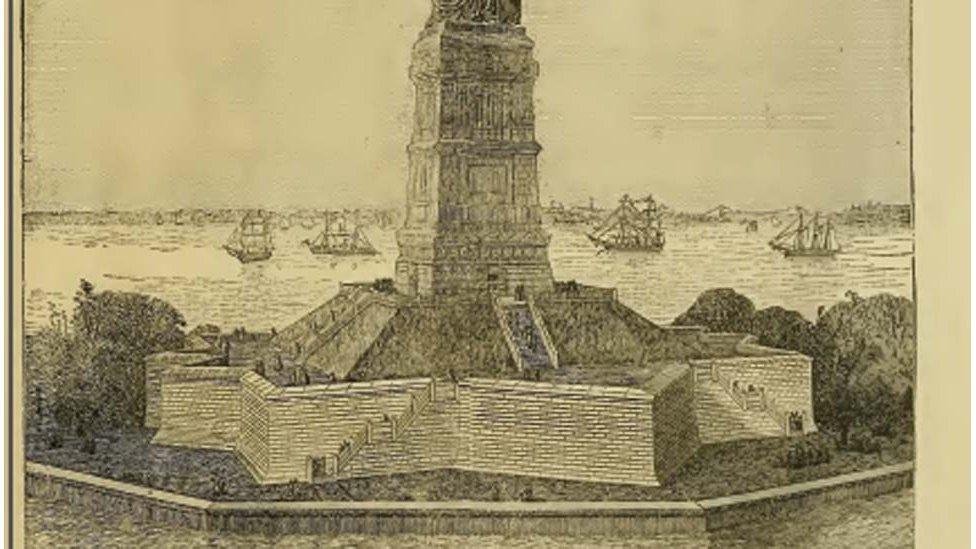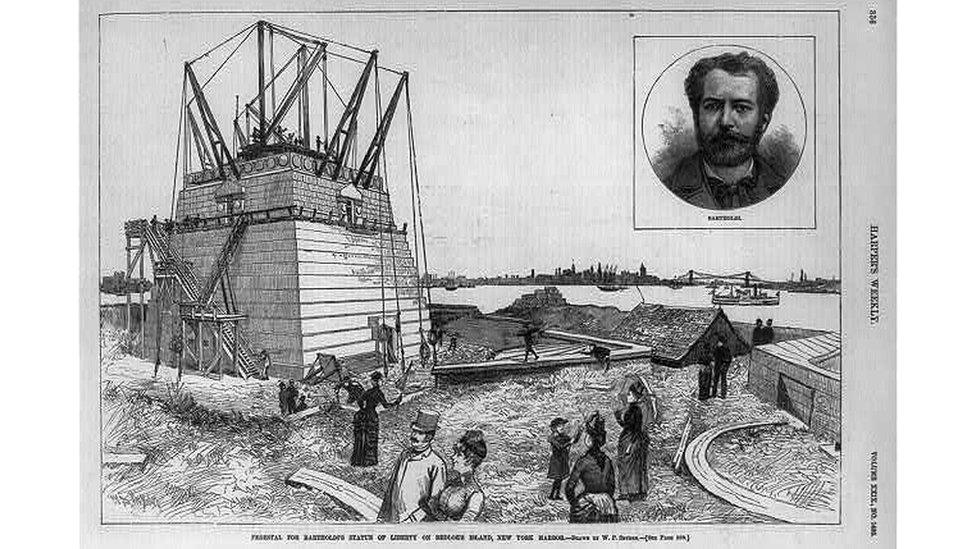In pictures: Statue of Liberty crowdfunding campaign
- Published

In 1885 Joseph Pulitzer - the renowned publisher after whom the Pulitzer Prize is named - launched an unusual fundraising campaign in his newspaper, The New York World. He was soliciting readers' donations to pay for a plinth for the Statue of Liberty.

Pulitzer's great crowdfunding effort remained one of his proudest achievements. He changed the newspaper's front page vignette to include an image of the statue, and later named his famous steam yacht Liberty.

After the Statue of Liberty was made at the expense of the French government as a diplomatic gift to the US, the committee overseeing the project could not raise enough money to have it installed. Neither New York City nor Congress would pay for it.

The pedestal, shown in a rendering from the Statue of Liberty's inaugural programme, cost $250,000, $100,000 of which came from The World's campaign.

Pulitzer used many techniques now commonly used by online crowdfunders to generate excitement and momentum for his campaign. For example, his newspaper published stories about the drive and created an enticing narrative for readers.

The contributions funded construction of the pedestal, as documented in this sketch from Harper's magazine. There was even some money left over far a gift for the sculptor, Frederic Auguste Bartholdi, pictured at right.
- Published25 April 2013